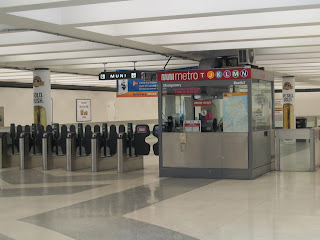Texan Eagle
Conductor
- Joined
- Aug 25, 2011
- Messages
- 1,705
All the people around here complaining that they don't like to fly because it involves waiting in long security lines, presenting you the Caltrain menace-

This is a daily occurrence at San Francisco Caltrain station. First of all there should be no kindergarten lines for boarding any kind of trains, but definitely NOT for a commuter train. I can understand some Amtrak employees wanting to go on a power trip making a couple dozen passengers line up to board a long distance train, but here we are talking about daily commuters who take the train from work to home regularly and know the workings of it sometimes better than the employees (on an unrelated note, the conductor on the Caltrain I take daily often can't figure out looking outside what station is approaching, but I can, and have reminded him what to announce on the PA).
This is not my rant, this photo has been shared by multiple people on Twitter and they are all venting their ire on @caltrain_news (Caltrain's official Twitter PR account) for the completely unnecessary procedure.

This is a daily occurrence at San Francisco Caltrain station. First of all there should be no kindergarten lines for boarding any kind of trains, but definitely NOT for a commuter train. I can understand some Amtrak employees wanting to go on a power trip making a couple dozen passengers line up to board a long distance train, but here we are talking about daily commuters who take the train from work to home regularly and know the workings of it sometimes better than the employees (on an unrelated note, the conductor on the Caltrain I take daily often can't figure out looking outside what station is approaching, but I can, and have reminded him what to announce on the PA).
This is not my rant, this photo has been shared by multiple people on Twitter and they are all venting their ire on @caltrain_news (Caltrain's official Twitter PR account) for the completely unnecessary procedure.




